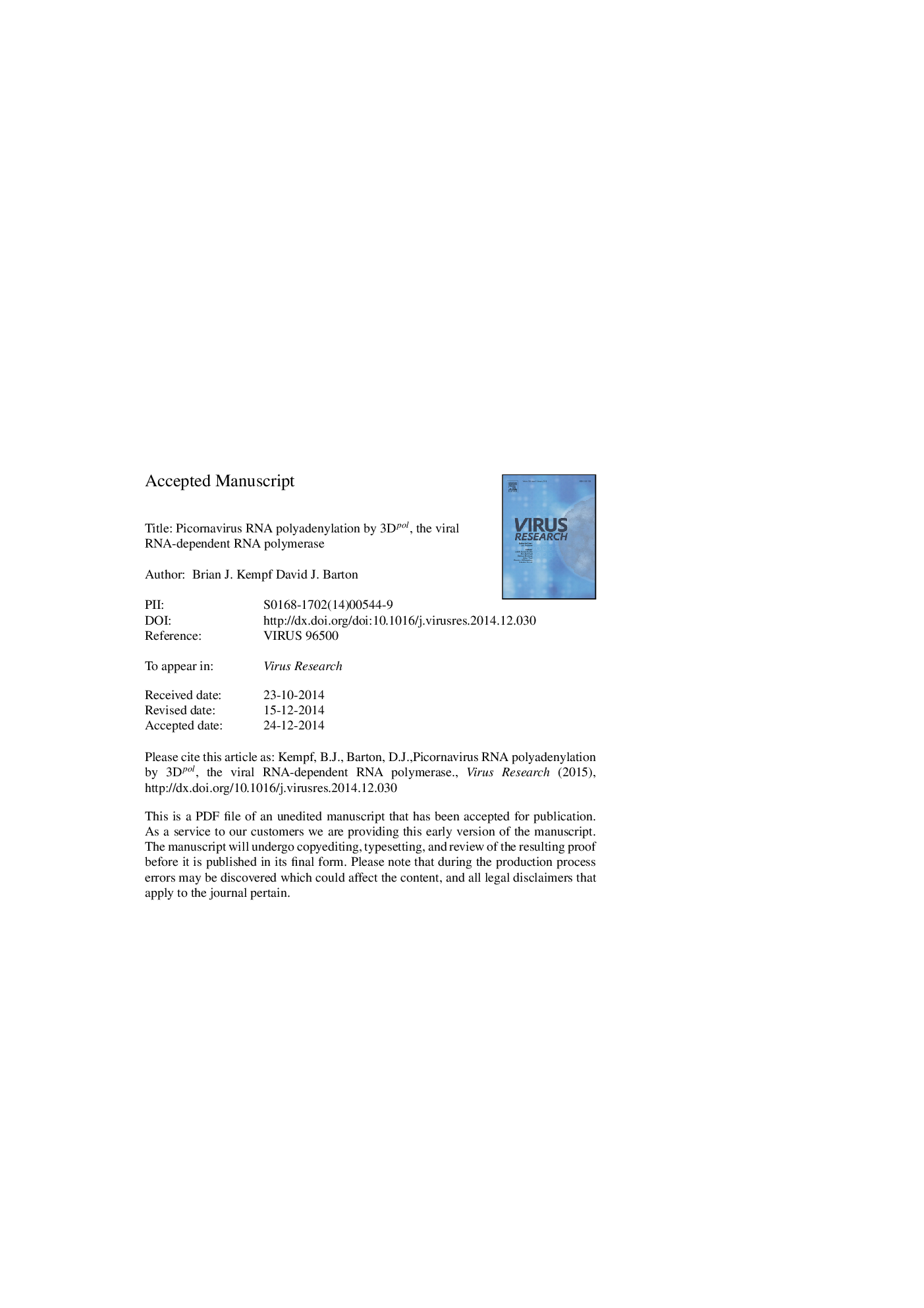| Article ID | Journal | Published Year | Pages | File Type |
|---|---|---|---|---|
| 6142229 | Virus Research | 2015 | 30 Pages |
Abstract
Poly(A) tails are functionally important features of all picornavirus RNA genomes. Some viruses have genomes with relatively short poly(A) tails (encephalomyocarditis virus) whereas others have genomes with longer poly(A) tails (polioviruses and rhinoviruses). Here we review the polyadenylation of picornavirus RNA as it relates to the structure and function of 3Dpol. Poliovirus 3Dpol uses template-dependent reiterative transcription mechanisms as it replicates the poly(A) tails of viral RNA (Steil et al., 2010). These mechanisms are analogous to those involved in the polyadenylation of vesicular stomatitis virus and influenza virus mRNAs. 3Dpol residues intimately associated with viral RNA templates and products regulate the size of poly(A) tails in viral RNA (Kempf et al., 2013). Consistent with their ancient evolutionary origins, picornavirus 3Dpol and telomerase reverse transcriptase (TERT) share structural and functional features. Structurally, both 3Dpol and TERT assume a “right-hand” conformation with thumb, palm and fingers domains encircling templates and products. Functionally, both 3Dpol and TERT use template-dependent reiterative transcription mechanisms to synthesize repetitive sequences: poly(A) tails in the case of picornavirus RNA genomes and DNA telomeres in the case of eukaryotic chromosomes. Thus, picornaviruses and their eukaryotic hosts (humans and animals) maintain the 3â² ends of their respective genomes via evolutionarily related mechanisms.
Related Topics
Life Sciences
Immunology and Microbiology
Virology
Authors
Brian J. Kempf, David J. Barton,
